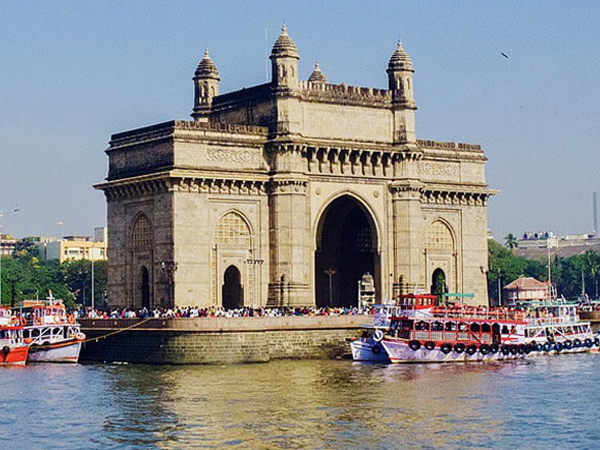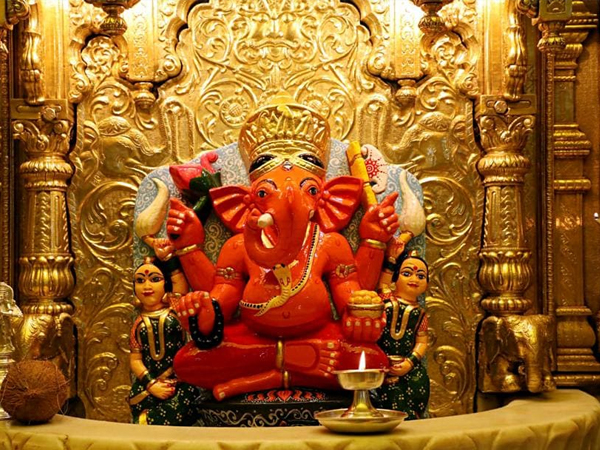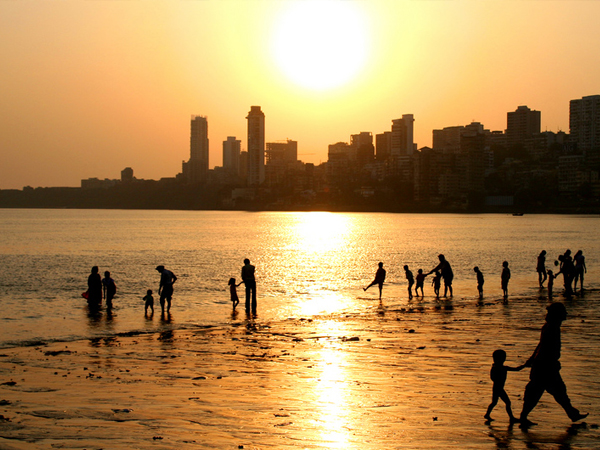Athirapally Waterfalls
Located about 55 km northeast of the Kochi Airport, as you’ll begin on the journey to Athirapally Falls, you’ll realize that even the road down to the sight is breathtaking! Snake roads filled with an astonishing variety of flora and fauna – rubber trees, palm trees, coconut trees also small streams running amidst them, you’ll also notice that most of the roads in Kerala are scenic and make the journey even more enjoyable.
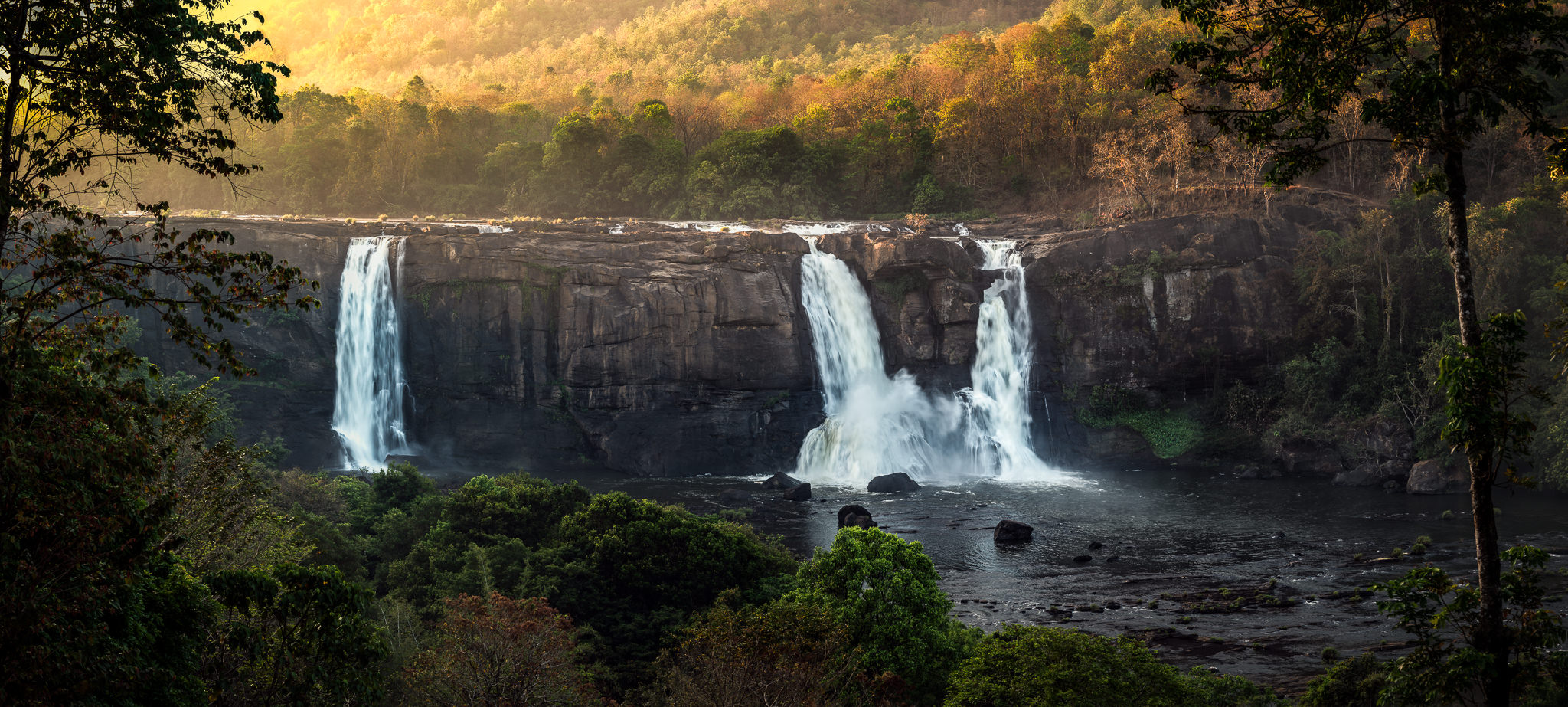
Approximately 80 feet high, being a part of the Chalakudy River, the access to the falls is steep and is a 2 km trek to the Athirapally Falls. As you walk higher and higher, the forest area is quiet and you can hear many kinds of birds singing and identify each bird from its voice. During monsoon, the trek turns slippery and is filled with little frogs jumping here and there. Walk around 15 minutes and you will hear the gigantic voice of the falls and lo! As you climb up, you will see the river flowing past large rocks and trees. The falls are so huge that for a minute you won’t believe that they can be so huge. You’ll also appreciate yourself, that the trek is worth it as you again go down towards the falls. You will find little children bathing in the river and a few steps ahead and the water goes down!
No wonder, the site has been a favorite with film directors for their locations. Mani Ratnam’s Raavan, Dil Se, Guru, and Iruvar have been shot here. It has been said that Abhishek Bachchan made that much-talked-about jump into the river here.
If one is on a vacation to Kerala, then a visit to the Athirapally Falls becomes a must-watch experience as it is a favorite destination for all those who love the magnificence of nature and beauty. Book a taxi that drives you to the falls and there are some good resorts also nearby, where you can halt for lunch or dinner. The ideal time to visit the Falls is during the monsoon when the rainwater is falling on the river, and fishermen are busy catching fish sitting by the river. Swimming here is not advised during this time, however, you can still find local villagers swimming in unknown waters.
There are many treks around the mountainous area to explore the falls and the guide rightly calls it the “Niagra of India”! You’ll don’t want to leave the place and want to enjoy the falls and the sound even after the sunsets. But as you start on the next journey, the falls and its beauty will remain on in the mind forever.
Chadayamangalam Para
The world’s largest bird sculpture and within it a rock theme park for adventure enthusiasts is what today pays tribute to the mythical bird from the Indian epic Ramayana – Jatayu.
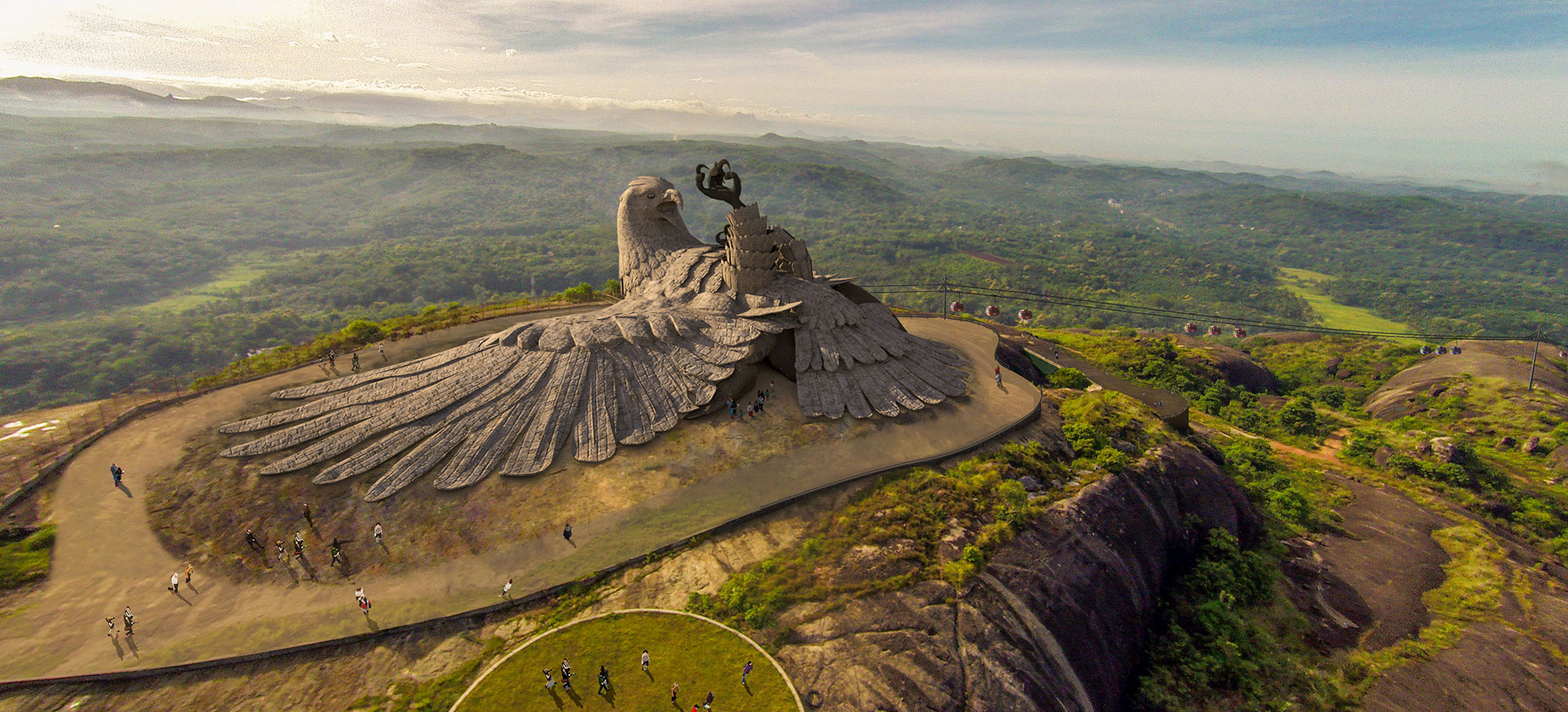
Legend has it that Jatayu tried to save Sita (wife of Lord Rama) when Ravana, a demon king, was abducting her in his airborne chariot. Jatayu is said to have fought valiantly and fallen on these rocks, grievously injured.
The Jatayu Adventure Center (Jatayu Earth’s Center), at Chadayamangalam, 50 km from Thiruvananthapuram, is a unique combination of artistry, mythology, technology, culture, adventure, leisure, and wellness. The virtual reality museum and the theatrical magic that renders the story of Jatayu add to the magic of the destination.
A creation of Mr. Rajiv Anchal, this destination is sure to leave each visitor awestruck. The state of the art ropeway offers one a bird’s eye view of God’s Own Country just as the helicopter rides do as well.
The Jatayu Adventure Center offers the largest adventure park within a natural terrain. Paintball, valley crossing, bouldering, zip line, trekking, archery, rappelling, jumaring and wall climbing are among the myriad activities available here. The climbing activities are designed around the natural rock formations on the hillside. While you are relishing the adrenaline rush the park offers you make sure you explore the multi cuisines at the food court with a panoramic view and the age-old Siddha Cave Healing Center as well for a complete, wholesome experience.
Agastya Mala
The name ‘Agastya Mala’ actually refers to a 2000 meters tall peak located within the state of Kerala and Tamil Nadu. While it is not traditionally a hill station, Agastya Mala| is located in the Western Ghats mountain range and is also a part of the Agastya Mala Biosphere Reserve and the Neyyar Wildlife Sanctuary.
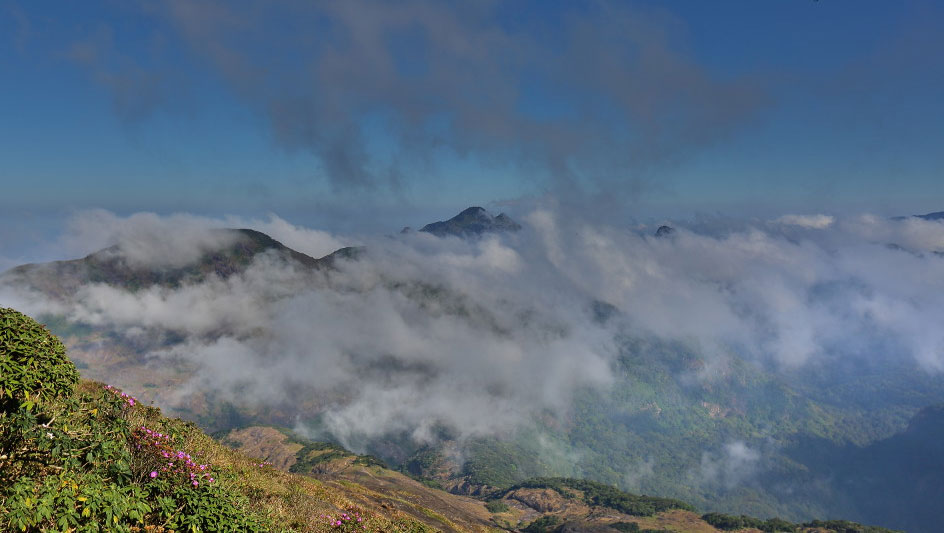
The Tamirabarani River originates from the eastern side of the hill range and flows perennially into the Tirunelveli district. The peak and its surroundings are known to have been the abode of the Hindu Sage Agastya from whom the Tamil language was born. The region was known to be a part of the Ayi Dynasty’s kingdom between 3rd century BC and 10th century AD. Today, Agastya Mala is a famous pilgrimage center for the Hindus and has a life-sized statue of Sage Agastat the top.
Being located in the Western Ghats, the Agastya Mala experiences a monsoon-influenced tropical highland climate. The summers can be warm and humid with showers from the southwest monsoons and winters are generally cool and dry. The summer starts in April till July when temperatures can rise to 35 degrees Celsius. Due to its unique location at the tip of the Southern-Indian peninsula, Agastya Mala experiences two seasons of monsoons, the South-West monsoons bring rains during May till July and the North-East monsoons bring rain during October and November. The months between October and January mark the winter season with temperatures hardly dropping below 16 degrees Celsius.
While the region is inhabited throughout the year, it is mostly inaccessible during the monsoons and due to the surrounding region being a part of the Neyyar Wildlife sanctuary and Agastya Mala Biosphere reserve. The tourist season in Agastya Mala starts during November and lasts till March.
Located at the tip of peninsular India and between the green hills of the Western Ghats, Agastya Mala (Agasthyarkoodam) is known for its lush green surroundings and the flora and fauna that the forests of Neyyar wildlife sanctuary houses. Tigers, Leopards, Sloth Bears, Elephants, Barking Deer, Sambhar Deer, Nilgiri Langur, Nilgiri Tahr and over 2,000 varieties of medicinal plants and other rare fauna are housed in the forests that surround Agastya Mala. Agastya Mala is also known to be a favorite location for the hikers and trekkers with passes issued especially by the Kerala Forest Department.
Vembanad Lake
Vembanad Lake emits the hues of sapphire and emerald. The sight of emerald green coconut fringes flanked by the sapphire led backwaters is a treat for eyes. With 96 km length and 14 km width, Vembanad Lake is recognized as the longest lake in India and the largest water reservoir in Kerala. Moreover, it is the heart of Kerala backwater. People from around the world come here for a boat ride and to spoil themselves in the scenic beauty of the backwaters.
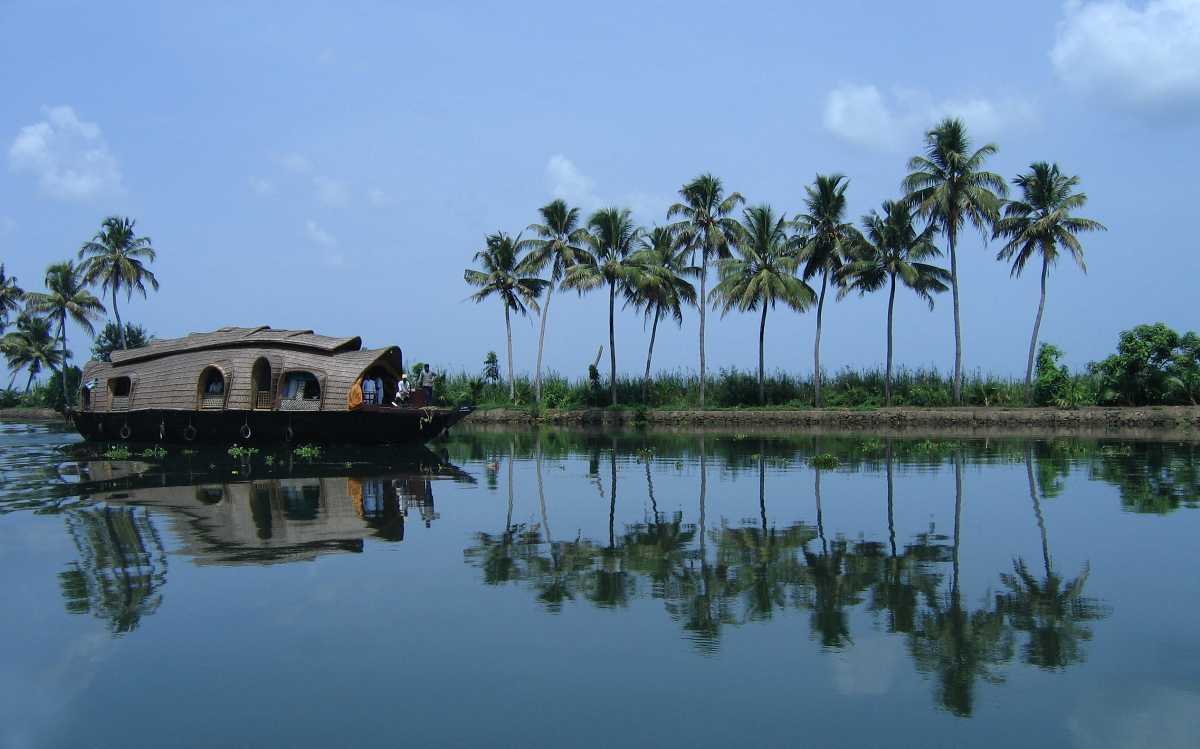
Serene and tranquil backwater of Kumarakom turns into starlit affair during the festival of Onam and snake boat race. During these festivals, the backwater spring back to life as thousands of people gathers to cheer for their favorite Chundan Vallams to chase the title of the fastest. More than just a sports event this grand carnival calls the international as well as the domestic crowd to cheer up the participants getting involved in energetic activity.
Canoes and houseboats are best recommended to transverse the length and breadth of Vembanad Lake. Life at Vembanad Lake runs at a very slow pace. Vembanad Lake is the place known for its serenity, peace and the aquatic animals that breed here. Houseboat ride in Vembanad Lake will take tourist to the Kumarakom Bird Sanctuary and small islands where they can see paddy plantation, hyacinths, traditional style of fishing, and sightseeing experience that is truly exhilarating. Tourists can also spot fascinating yet beautiful avian species that are thriving in the temperate season. For photographers, the lake is nothing less than a bountiful ride that will show them the most pristine form of nature. Surroundings of the lake are too-good-to-be-true.
Edakkal Caves
A trip to Wayanad wouldn’t be complete without a visit to the Edakkal Caves. The caves have attracted historians and archaeologists around the world with its rich historical charm. The Edakkal Caves in Wayanad is one of the popular attractions of Wayanad district in Kerala. Edakkal means ‘a stone in-between’ and this can be seen in the structure of the caves. There is a stone that is wedged between two big boulders.
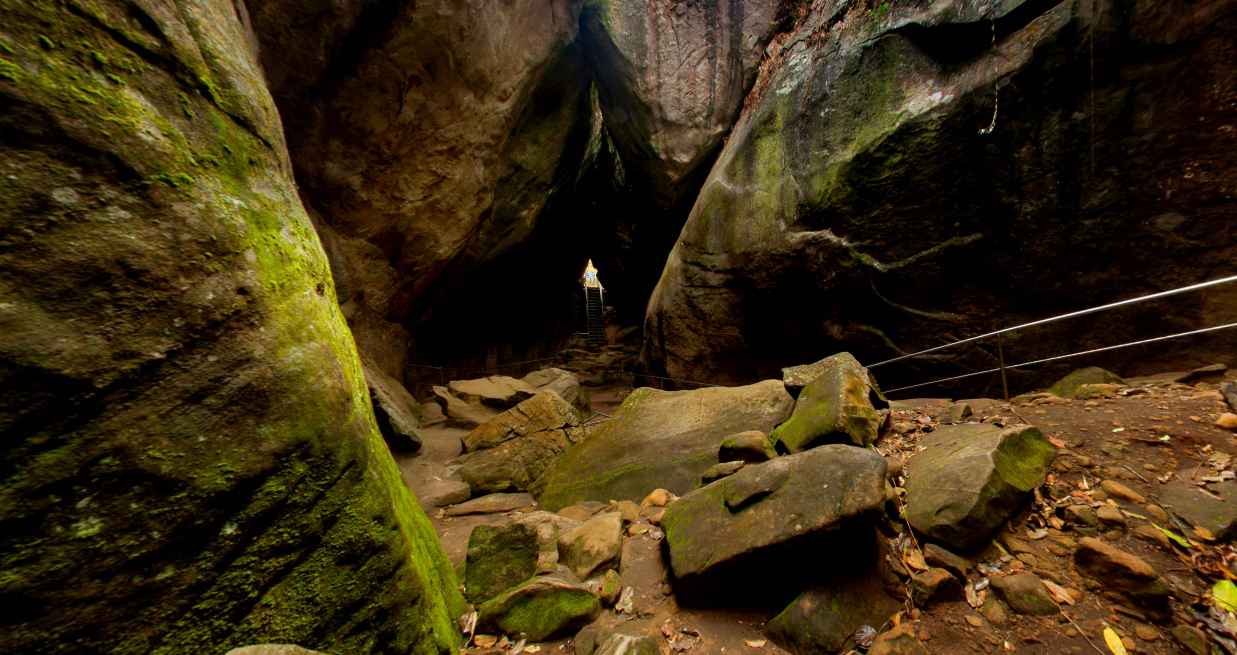
Located around 25 km from Kalpetta at an altitude of about 1200 meters above sea level, it takes a tough trek on the Ambukuthi Hills to reach the caves as the hill up gets steeper as you go higher. Some stalls sell refreshments on both sides of the stepped trek trail. On reaching the site, you may feel like being thrown to another world. The caves belong to the Stone Age when people used to write on the stone using sharp manmade tools. You can find these etchings that include images of humans, animals, religious symbols and other signs that were used by the ancient man those days. These rock etchings speak of the highly civilized people of the neolithic age and have attracted students and researchers around the globe.
It is interesting to know that in 1890 the then British Malabar Police Superintendent F. Fawcett on his way for hunting, had found rock tools on the site that were used by the ancient man. Being a pre-historic enthusiast, he explored the cave-site and found that the caves had etched rocks that belonged to the Neolithic Age. This discovery was the first among the ancient scriptures on a rock found in India. Later, the caves were taken over by the State Archaeology Department and declared it as a protected site.


